3 Low Light Plants That Thrive in Apartments
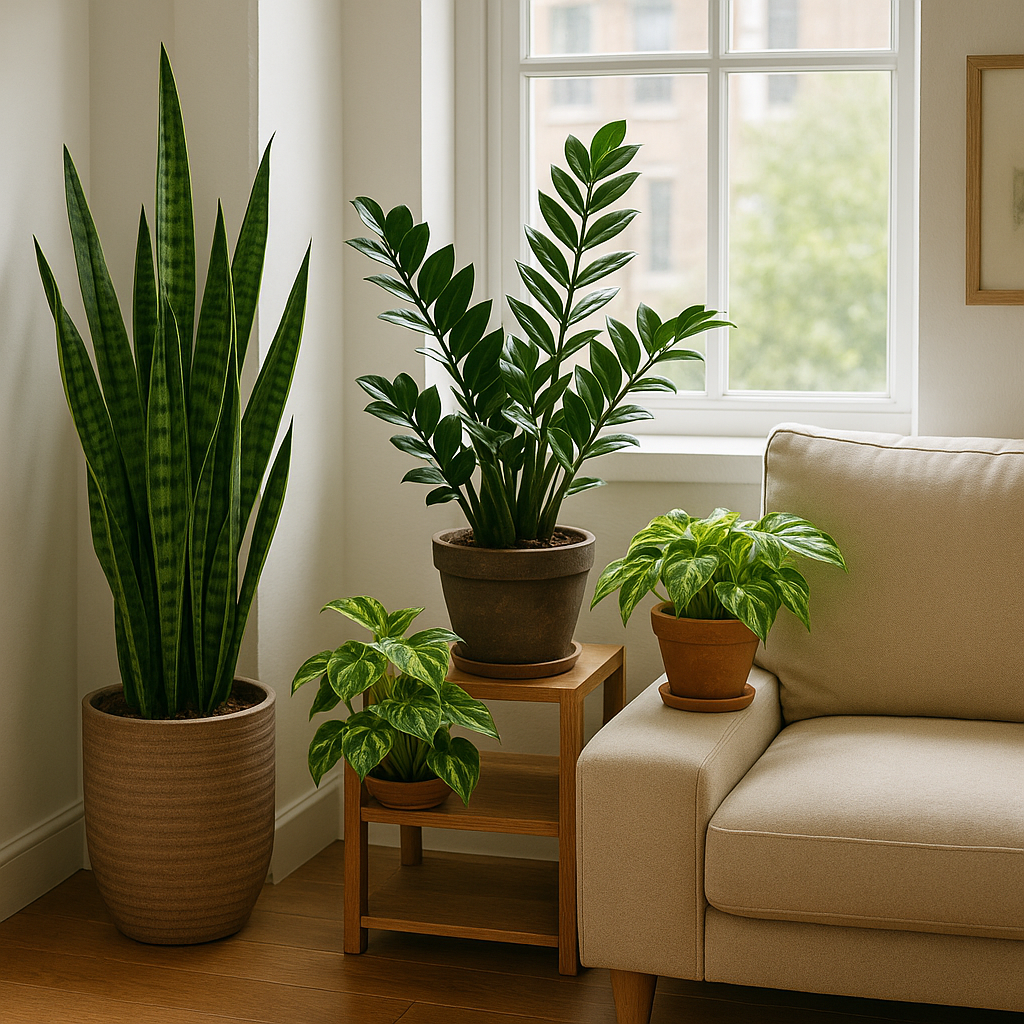
Struggling to Keep Plants Alive in Your Dimly-Lit Apartment?
Have you ever brought home a beautiful plant, full of hope and decorating dreams, only to watch it slowly wither away in your apartment’s less-than-ideal lighting conditions? If you’re nodding in frustration, you’re certainly not alone. Finding the best plants for low light apartments can feel like an impossible mission when every plant tag seems to demand “bright, indirect sunlight” – something your urban dwelling simply doesn’t offer.
The reality is that many apartment dwellers face significant challenges when it comes to indoor gardening. North-facing windows, neighboring buildings blocking sunlight, or simply living in a location that doesn’t get much natural light throughout the year can make it seem like growing plants indoors is a privilege reserved for those with sun-drenched spaces. As someone who spent years in a basement apartment with just two small windows, I understand the disappointment of watching yet another plant struggle to survive.
But here’s the good news: nature has evolved some incredible species that not only tolerate low light conditions but actually thrive in them. These resilient plants have adapted to grow on forest floors beneath dense canopies or in tropical environments where direct sunlight rarely reaches them. By selecting the right varieties and understanding their specific needs, you can transform even the dimmest apartment into a lush indoor garden that purifies your air, enhances your decor, and brings that much-needed connection to nature into your daily life.
🌿 What You’ll Discover in This Guide
This comprehensive guide will introduce you to seven exceptional low-light tolerant plants that can transform your dim apartment into a thriving indoor garden, regardless of your lighting situation or gardening experience.
- 🪴 Top 3 Low-Light Plants: Detailed profiles of plants specifically selected for apartment conditions
- 💧 Care Requirements: Watering, humidity, and maintenance needs for each plant
- 🌡️ Environmental Considerations: Temperature and placement recommendations
- 🔍 Common Problems: Troubleshooting issues specific to low-light growing
- 🛒 Where to Find Them: Best sources for healthy specimens
- 🧰 Essential Tools: Must-have items for low-light plant success
Understanding Low Light Conditions 🌥️
Before diving into specific plant recommendations, let’s clarify what “low light” actually means in plant terms. Many new plant parents misinterpret their lighting conditions, which can lead to disappointing results even with so-called “low light” plants.
“Low light doesn’t mean no light,” explains Dr. Lisa Steinkopf, horticulturist and author of “Houseplants: The Complete Guide to Choosing, Growing, and Caring for Indoor Plants.” “Even plants that tolerate low light need some illumination to perform photosynthesis. What differentiates them is their efficiency at using limited light.”
In technical terms, low light environments typically provide between 50-250 foot candles of light. For context, direct sunlight provides about 10,000 foot candles! While this measurement might sound technical, you can roughly gauge your light levels by this simple test: if you can comfortably read a book in a space without turning on additional lights during daytime, you likely have sufficient light for low-light plants.
Low light locations in apartments typically include:
- Spaces 5-10 feet away from north-facing windows
- Rooms with windows obstructed by external structures or trees
- Areas near east or west-facing windows that receive minimal direct sun
- Interior walls away from any direct window light
- Bathrooms or kitchens with small or frosted windows
According to a 2021 study published in the Journal of Environmental Horticulture, approximately 77% of apartment dwellers report having at least one area in their home that receives less than three hours of indirect light per day. Yet with proper plant selection, these spaces can still support thriving plant life.
Top 3 Low-Light Plants for Apartments 🪴
1. Snake Plant (Sansevieria)
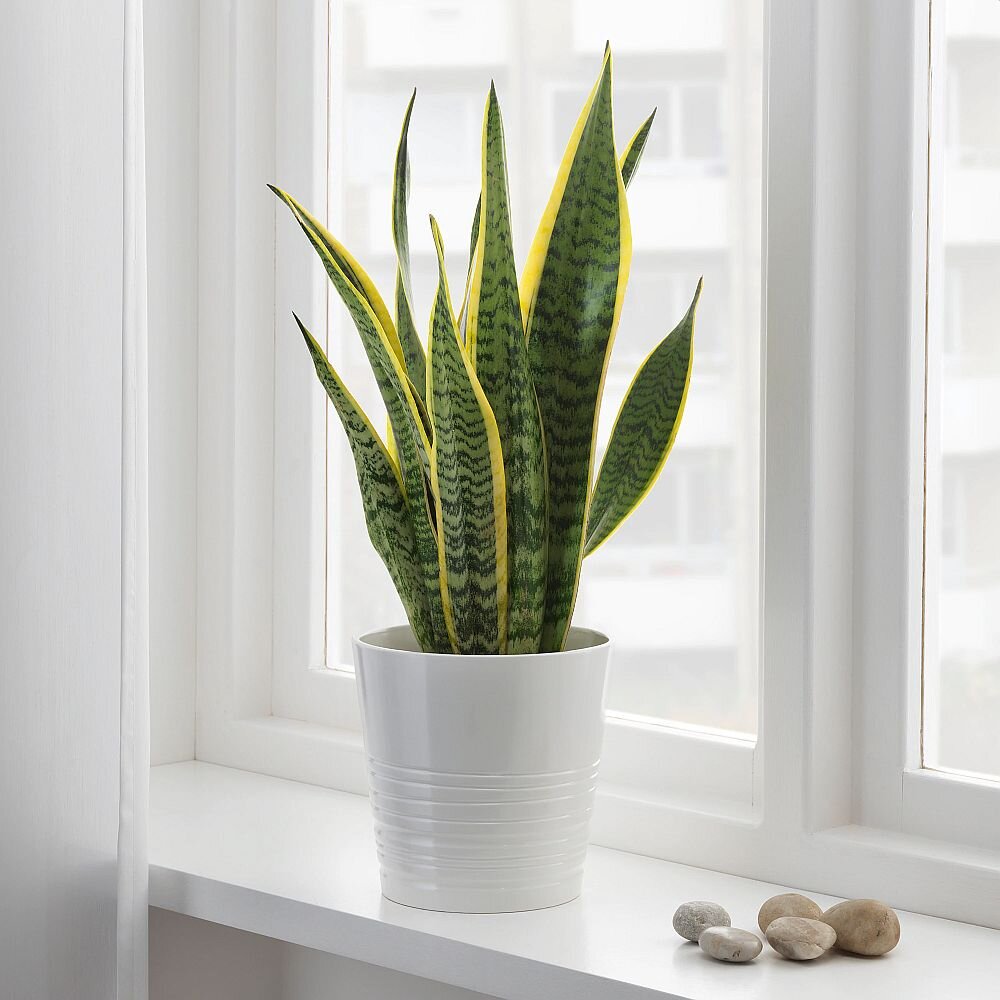
The snake plant might just be the ultimate apartment dweller’s plant companion. With its striking upright leaves and architectural presence, this resilient plant does more than just survive in low light—it maintains its distinctive appearance with minimal care.
Snake plants can tolerate extended periods of neglect, making them perfect for busy apartment dwellers or frequent travelers. Their thick, succulent-like leaves store water efficiently, allowing them to go 3-4 weeks between waterings during cooler months.
“What makes snake plants exceptional is their unique photosynthetic process,” says botanist Dr. James Wong. “Unlike most houseplants, they utilize CAM photosynthesis, absorbing carbon dioxide at night and processing it during the day, which makes them incredibly efficient in limited light.”
Available in varieties ranging from dwarf 6-inch specimens to impressive 4-foot statements, snake plants fit any apartment space. Their air-purifying abilities are also well-documented—NASA studies show they’re particularly effective at removing formaldehyde and benzene from indoor environments.
Pro Tip: Snake plants prefer to be slightly root-bound, so don’t rush to repot them. Choose a container only 1-2 inches wider than the current pot when it’s time to repot (typically every 2-3 years).
2. ZZ Plant (Zamioculcas zamiifolia)

The ZZ plant has skyrocketed in popularity among apartment dwellers for good reason—it’s practically indestructible in low light conditions. With its glossy, dark green leaves arranged in a distinctive pattern along arching stems, the ZZ plant brings a sophisticated tropical vibe to any space without demanding much in return.
What makes ZZ plants particularly suitable for apartments with challenging light is their evolutionary adaptation. Native to drought-prone areas of Eastern Africa, they’ve developed specialized underground rhizomes that store water and nutrients, allowing them to thrive with minimal resources.
“The ZZ plant’s tough rhizomes act like natural batteries,” explains urban gardening specialist Maria Torres. “They store energy reserves that help the plant survive extended periods in less-than-ideal conditions, which is exactly what many apartment environments provide.”
Care requirements for ZZ plants are refreshingly simple:
- Water only when the soil is completely dry (typically every 3-4 weeks)
- No need for special humidity considerations
- Tolerate standard apartment temperatures (65-80°F)
- Rarely need repotting (every 2-3 years)
- Almost never troubled by pests or diseases
Recent studies from Purdue University indicate that ZZ plants can efficiently photosynthesize under artificial light, making them ideal for spaces without windows or rooms exclusively illuminated by overhead lighting.
Important: While supremely adaptable, ZZ plants contain calcium oxalate crystals that are toxic if ingested. Keep them away from curious pets and children, and wash your hands after handling them to avoid potential skin irritation.
3. Pothos (Epipremnum aureum)
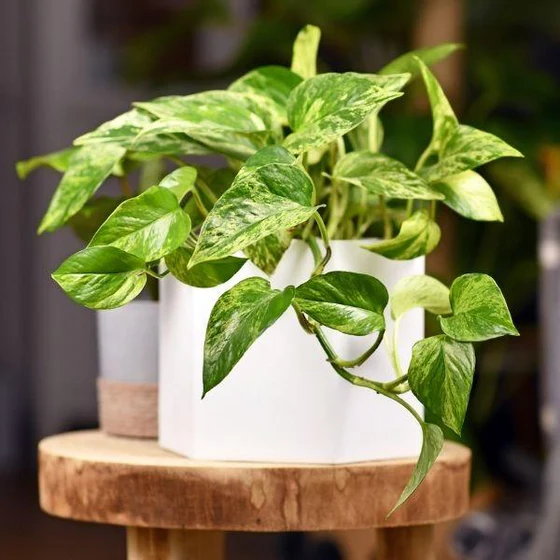
Pothos plants—with their heart-shaped leaves and trailing vines—have earned their reputation as one of the most forgiving houseplants for apartment dwellers. These adaptable climbers not only tolerate low light conditions but continue to grow and produce new leaves even in challenging environments.
Available in varieties ranging from the classic golden pothos with yellow variegation to the silvery marble queen and neon pothos with its electric lime-green foliage, there’s a pothos variety to complement any apartment aesthetic. Their trailing nature makes them perfect for shelves, mantels, or hanging planters where their vines can create living curtains of greenery.
According to a comparative study of houseplants’ adaptability published in HortScience journal, pothos plants maintained 85% of their growth rate in low light conditions compared to only 30-50% for most other common houseplants.
| Pothos Variety | Light Tolerance | Growth Rate in Low Light | Special Features |
|---|---|---|---|
| Golden Pothos | Excellent | High | Yellow variegation intensifies in brighter light |
| Marble Queen | Very Good | Medium | White/cream variegation, more light = more variegation |
| Jade Pothos | Outstanding | Highest | Solid green, fastest growth in low light |
| Neon Pothos | Good | Medium-Low | Brightest in medium light but tolerates low |
“Pothos plants are especially valuable for apartment dwellers because they’re excellent indicators of watering needs,” says horticultural therapist Jennifer Green. “Their leaves visibly droop when they need water, then perk up quickly after watering, making them perfect for beginners still learning plant care rhythms.”
Proper Care Techniques for Low-Light Plants 💧
The most common mistake apartment dwellers make with low-light plants isn’t about light at all—it’s overwatering. When plants receive less light, their metabolic processes slow down, meaning they use water much more slowly than their sun-loving counterparts.
“The number one killer of indoor plants in low-light conditions is consistently wet soil,” warns professional plant consultant Rebecca Rodriguez. “In limited light, plants simply cannot process water quickly enough, leading to root rot—essentially drowning your plants slowly.”
To properly care for your low-light plants, follow these essential guidelines:
- 🌊 Adjust watering schedules seasonally – Most low-light plants need water half as frequently in winter as they do in summer
- 👆 Use the finger test – Insert your finger 2 inches into the soil; only water when it feels completely dry at that depth
- 🕰️ Allow thorough drainage – Always empty saucers 30 minutes after watering to prevent standing water
- 🌡️ Consider temperature – Plants near heaters or air conditioners dry out faster regardless of light
- 💨 Monitor airflow – Good air circulation prevents fungal issues common in low-light conditions
One particularly effective technique for apartment gardeners is bottom watering. This method involves placing your potted plant in a basin with 1-2 inches of water and allowing it to absorb moisture through the drainage holes. After 20-30 minutes, remove the plant and let excess water drain completely.
Pro Tip: Consider using a moisture meter if you struggle to gauge when to water. These inexpensive tools provide objective readings of soil moisture and can prevent both under and overwatering—the two most common causes of plant decline in apartments.
Low-light plants generally require fertilization at about half the frequency recommended for plants in brighter conditions. During active growing seasons (spring and summer), a diluted liquid fertilizer applied monthly is usually sufficient. During fall and winter, most low-light plants benefit from minimal or no fertilization as their growth naturally slows.
Creating the Ideal Environment 🏡
While low-light plants are adaptable to challenging conditions, creating the ideal microenvironment around them significantly improves their health, appearance, and longevity. The key is to compensate for the typical apartment challenges: dry air, temperature fluctuations, and limited space.
Humidity Management
Most apartment environments suffer from humidity levels well below what houseplants prefer, particularly during winter months when heating systems are active. According to the American Society of Heating, Refrigerating and Air-Conditioning Engineers (ASHRAE), the average heated apartment maintains only 20-30% relative humidity, while most houseplants evolved in environments with 40-60% humidity.
Effective methods to increase humidity for low-light plants include:
- Grouping plants together – Creates a naturally humid microclimate through collective transpiration
- Pebble trays – Place plants on trays filled with water and pebbles (keeping pot above water level)
- Strategic bathroom placement – Many low-light plants thrive in bathroom environments if some ambient light is available
- Room humidifiers – Particularly valuable during winter months when indoor air is driest
“Clustering compatible plants creates what I call ‘humidity islands’ in apartments,” explains interior plant designer Sofia Martinez. “By grouping plants with similar needs, you can effectively create small ecosystems where they support each other’s humidity requirements.”
Temperature Considerations
Most low-light tolerant plants prefer consistent temperatures between 65-75°F (18-24°C), which aligns well with comfortable human living conditions. However, watch for these common apartment temperature challenges:
| Challenge | Impact on Plants | Solution |
|---|---|---|
| Drafty windows | Sudden temperature drops, leaf damage | Place plants 2+ feet from windows in winter |
| Radiator heat | Extremely dry conditions, leaf scorch | Use humidity trays, consider heat shields |
| Air conditioning drafts | Cold damage, stunted growth | Keep plants away from direct AC airflow |
| Hot electronics | Localized heat stress | Maintain 1+ foot distance from TVs, routers, etc. |
Space Optimization for Low-Light Plants
Apartment dwellers often face space constraints, making it essential to strategically position plants for both aesthetic appeal and optimal growing conditions. Vertical gardening solutions are particularly valuable for low-light plants in apartments with limited floor space.
Consider these space-efficient approaches:
- Wall-mounted plant shelves positioned away from direct sunlight
- Hanging planters from curtain rods or ceiling hooks
- Tiered plant stands that create multiple growing levels
- Using room dividers that incorporate plant shelving
“The key is thinking three-dimensionally about your space,” suggests small-space design expert Michael Chen. “Most apartments have plenty of unused vertical real estate that’s perfect for low-light plants, particularly trailing varieties that can cascade downward.”
Troubleshooting Common Issues 🔍
Even the most resilient low-light plants can develop problems, particularly in apartment environments where conditions may fluctuate. Learning to recognize and address these issues quickly can mean the difference between a plant that rebounds and one that declines beyond recovery.
⚠️ Yellowing Leaves
Yellowing leaves are among the most common complaints from apartment plant owners, but the causes vary significantly:
- Overwatering – Typically affects lower, older leaves first; soil stays consistently wet
→ Solution: Allow soil to dry completely between waterings; check for proper drainage - Underwatering – Usually affects multiple leaves simultaneously; soil is bone dry
→ Solution: Establish a more consistent watering routine based on your specific apartment conditions - Insufficient light – Gradual yellowing across the plant; stretched, leggy growth
→ Solution: Move plant closer to light source or supplement with artificial grow lights - Nutrient deficiency – Yellowing between leaf veins while veins remain green
→ Solution: Apply balanced fertilizer at half-strength; consider repotting if plant is pot-bound
According to a survey by the Houseplant Resource Center, 68% of yellowing issues in apartment plants are directly related to watering problems, with light deficiency accounting for another 22%.
🐛 Pest Infestations
While low-light plants generally experience fewer pest problems than their high-light counterparts, apartment environments can still harbor common pests including:
| Pest Type | Signs | Treatment |
|---|---|---|
| Spider Mites | Fine webbing, stippled leaves | Increase humidity, spray with insecticidal soap |
| Mealybugs | White cottony deposits | Dab with alcohol-soaked cotton swab, neem oil treatments |
| Fungus Gnats | Small flying insects, larvae in soil | Allow soil to dry completely, use sticky traps |
| Scale | Brown bumps on stems/leaves | Manual removal, horticultural oil applications |
Safety Tip: Always test pest treatments on a small portion of the plant first to ensure no adverse reaction before treating the entire plant. For apartment dwellers with pets, be particularly cautious with treatments containing essential oils, which can be toxic to cats especially.
“An often overlooked preventative measure for apartment plants is regular cleaning,” notes entomologist Dr. Abigail Warren. “Dust accumulation on leaves not only blocks what limited light is available but can harbor pests and their eggs. A monthly shower or gentle leaf wiping significantly reduces pest pressure on indoor plants.”
Styling with Low-Light Plants 🏠
Low-light plants can do more than simply survive in your apartment—they can become stunning design elements that enhance your space. The key is thoughtful placement and styling that works with your existing decor while meeting the plants’ minimal light needs.
Creating Visual Impact with Plant Groupings
The rule of three applies beautifully to plant styling—grouping plants in odd numbers (especially threes and fives) creates naturally appealing arrangements. When working with low-light plants:
- 📏 Vary heights – Combine floor plants, table plants, and hanging specimens
- 🍃 Mix textures – Pair feathery ferns with structural snake plants or smooth-leaved pothos
- 🎨 Coordinate containers – Use complementary colors or unified materials (all ceramic, all woven, etc.)
- 🔄 Create rhythm – Repeat similar plants or containers throughout your space for cohesion
Interior designer Jordan Williams suggests, “Think of styling low-light plants as creating ‘living vignettes’ throughout your apartment. These small plant moments draw the eye around the room and soften the hard lines typically found in apartment architecture.”
Strategic Placement for Maximum Impact
Low-light plants can serve specific design functions in apartment settings:
- Room dividers – Tall plants like snake plants or column-shaped ZZ plants create natural boundaries
- Dead corner fillers – Dark corners come alive with cascading pothos or peace lilies
- Bathroom enhancers – Humidity-loving plants thrive in typically low-light bathroom environments
- Bedside companions – Peace lilies and snake plants can purify air while adapting to bedroom lighting
According to a 2022 survey by Apartment Therapy, 83% of respondents reported that strategically placed houseplants made their apartments feel larger and more inviting, with low-light plants specifically allowing greenery in previously unused spaces.
Container Selection for Low-Light Plants
Your choice of containers significantly impacts both plant health and design aesthetic:
| Container Type | Benefits | Considerations for Low-Light Plants |
|---|---|---|
| Ceramic/Terracotta | Breathable, stable, design variety | Dries more quickly; good for plants prone to overwatering |
| Plastic | Lightweight, retains moisture, inexpensive | Better for plants that prefer consistent moisture |
| Metal | Modern aesthetic, durable | Can get hot/cold easily; always use with interior liner |
| Woven/Natural | Adds texture, eco-friendly | Often lacks drainage; use with plastic nursery pot inside |
The ideal container for low-light plants should always prioritize proper drainage while complementing your existing interior design elements.
FAQ: Low-Light Plant Care ❓
🌱 Is it possible for plants to get too little light?
Yes, even the most shade-tolerant plants need some light for photosynthesis. Signs your plant isn’t getting enough light include leggy growth, smaller new leaves than older ones, loss of variegation, and minimal or no new growth over several months. If you notice these symptoms, consider supplementing with artificial grow lights or relocating the plant to a brighter location.
💡 Can regular light bulbs substitute for natural light?
Standard household LED or fluorescent bulbs can help plants survive but aren’t optimized for plant growth. They typically lack the full spectrum of light plants need. For apartments with very limited natural light, consider investing in proper grow lights that provide the appropriate light spectrum. Many affordable options are designed specifically for apartment use with attractive designs that blend with decor.
🌊 How does watering differ for plants in low-light conditions?
Plants in low light require significantly less frequent watering than those in bright conditions. Their metabolic processes slow down in limited light, so they use water more slowly. Always check soil moisture before watering—the soil should be dry 1-2 inches deep for most low-light plants. Overwatering is the most common killer of low-light plants in apartments.
🌡️ Do low-light plants need special temperature considerations?
Most low-light houseplants prefer temperatures between 65-75°F (18-24°C), which aligns with comfortable human living temperatures. However, be mindful of drafty windows in winter and hot radiators that can create extreme conditions. Keep plants away from heating and cooling vents to avoid temperature stress and rapid moisture fluctuations.
🍂 Should I remove yellow or brown leaves from my low-light plants?
Yes, promptly remove any yellow or brown leaves once they’re more than 50% discolored. These leaves drain the plant’s energy and can harbor pests or diseases. Use clean, sharp scissors to cut the affected leaf at its base rather than tearing it off, which can damage healthy tissue.
🐈 Are low-light plants safe for pets?
Not all low-light plants are pet-safe. Some common toxic varieties include pothos, peace lily, and ZZ plant. Pet-safe alternatives that tolerate low light include spider plants, Boston ferns, and certain calathea varieties. Always research specific plants before bringing them home if you have pets that might nibble on them.
👩🌾 How can I tell if my apartment truly has “low light”?
A simple way to assess your light levels is the shadow test: Hold your hand about 12 inches from a wall or surface during daylight hours (no artificial lights on). If your hand casts a faint shadow with soft edges, you have low light. No shadow means very low light, while a distinct shadow indicates medium light. There are also light meter apps available for smartphones that can give you more precise readings.
🌿 Do low-light plants need fertilizer?
Yes, but less frequently than plants in bright light. Since growth is slower in low light conditions, fertilize at half the recommended strength and half the frequency (typically once every 2-3 months during growing season and not at all during winter). Overfertilizing can damage roots and cause more harm than good.
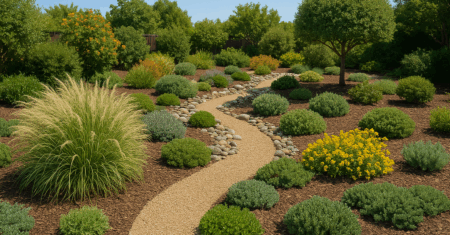
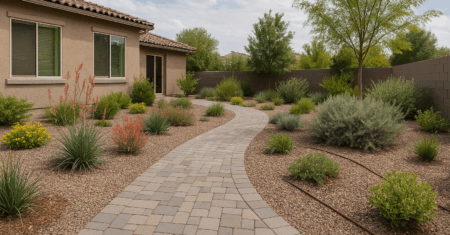
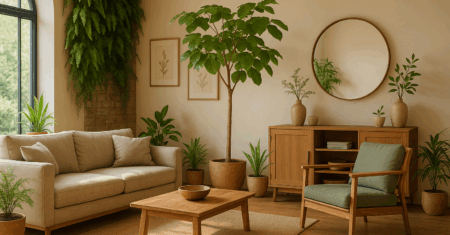
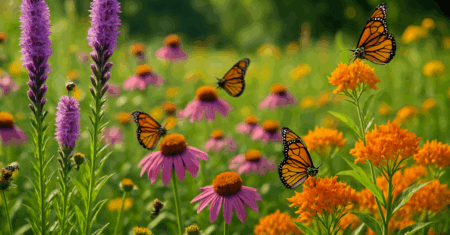
0 Comments